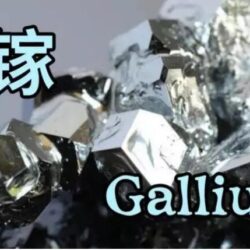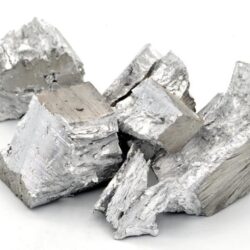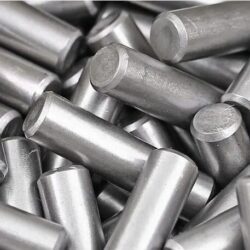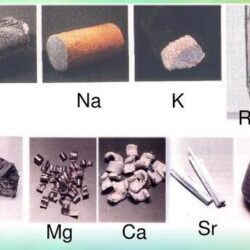Gold has several qualities that have made it exceptionally valuable throughout history. It is attractive in colour and brightness, durable to the point of virtual indestructibility, highly malleable, and usually found in nature in a comparatively pure form. The history of gold is unequaled by that of any other metal because of its perceived value from earliest times.

Gold is a chemical element with the symbol Au (from Latin: aurum) and atomic number 79, making it one of the higher atomic number elements that occur naturally. In a pure form, it is a bright, slightly reddish yellow, dense, soft, malleable, and ductile metal. Chemically, gold is a transition metal and a group 11 element. It is one of the least reactive chemical elements and is solid under standard conditions. Gold often occurs in free elemental (native) form, as nuggets or grains, in rocks, in veins, and in alluvial deposits. It occurs in a solid solution series with the native element silver (as electrum), naturally alloyed with other metals like copper and palladium and also as mineral inclusions such as within pyrite. Less commonly, it occurs in minerals as gold compounds, often with tellurium (gold tellurides).
Gold is resistant to most acids, though it does dissolve in aqua regia (a mixture of nitric acid and hydrochloric acid), which forms a soluble tetrachloroaurate anion. Gold is insoluble in nitric acid, which dissolves silver and base metals, a property that has long been used to refine gold and to confirm the presence of gold in metallic substances, giving rise to the term acid test. Gold also dissolves in alkaline solutions of cyanide, which are used in mining and electroplating. Gold dissolves in mercury, forming amalgam alloys, and as the gold acts simply as a solute this is not a chemical reaction.
Characteristics
Gold is the most malleable of all metals. It can be drawn into a wire of single-atom width, and then stretched considerably before it breaks. Such nanowires distort via formation, reorientation and migration of dislocations and crystal twins without noticeable hardening.A single gram of gold can be beaten into a sheet of 1 square metre (11 sq ft), and an avoirdupois ounce into 300 square feet (28 m2). Gold leaf can be beaten thin enough to become semi-transparent. The transmitted light appears greenish blue, because gold strongly reflects yellow and red. Such semi-transparent sheets also strongly reflect infrared light, making them useful as infrared (radiant heat) shields in visors of heat-resistant suits, and in sun-visors for spacesuits.Gold is a good conductor of heat and electricity.
Gold has a density of 19.3 g/cm3, almost identical to that of tungsten at 19.25 g/cm3; as such, tungsten has been used in counterfeiting of gold bars, such as by plating a tungsten bar with gold, or taking an existing gold bar, drilling holes, and replacing the removed gold with tungsten rods.[19] By comparison, the density of lead is 11.34 g/cm3, and that of the densest element, osmium, is 22.588±0.015 g/cm3.
Chemistry
Although gold is the most noble of the noble metals, it still forms many diverse compounds. The oxidation state of gold in its compounds ranges from −1 to +5, but Au(I) and Au(III) dominate its chemistry. Au(I), referred to as the aurous ion, is the most common oxidation state with soft ligands such as thioethers, thiolates, and tertiary phosphines. Au(I) compounds are typically linear. A good example is Au(CN)2−, which is the soluble form of gold encountered in mining. The binary gold halides, such as AuCl, form zigzag polymeric chains, again featuring linear coordination at Au. Most drugs based on gold are Au(I) derivatives.

History
Early stage
Jin has been recognized and highly valued in prehistoric times. It may be the earliest metal used by human beings. It is used for decoration and rituals. Gold has been described in Egyptian hieroglyphs as early as 2600 BC. King tushratta of Mitani said that gold was “more than soil” in Egypt. The resources of countries and regions such as Egypt and Nubia have made them major gold producing areas in most of history. The earliest known map is the Turin papyrus map in 1320 BC, which shows the distribution of gold deposits in Nubia and the indication of local geology. The original mining method was described by Strabo, including arson. Large gold deposits also occurred on the other side of the Red Sea, which is now a Hanzhi place in Saudi Arabia.
6th century BC to 1st century BC
During this period, gold began to be used in the form of money. Lydia was the first known place to use gold as currency. In 700 BC, Lydia made coins in the form of alloy of silver and gold. In China during the 6th or 5th century BC, a gold coin called Ying yuan circulated in the state of Chu. Ancient Greece mined gold in the Middle East and the Mediterranean about 550 years ago. In 323 BC, Greek mining sites ranged from Gibraltar to Asia Minor and Egypt. At that time, the theme of jewelry in Greece was mainly the shape of people or animals. Classic examples include the mask of Agamemnon and other rings.
1st to 2nd century BC
The technology of mining gold was improved at this time. The ancient Romans developed a new method of large-scale gold mining by hydraulic mining, especially in the Iberian Peninsula in the first 25 years and in the province of Dacia in 150 years. One of the largest gold mines is located in Las m é Dulas in Galicia, Spain, where there are seven long viaducts that allow them to elutriate most of the alluvial minerals. In outer sevania, RO ş ia Montan ă The gold mine is also very large, and opencast mining is still used. Gold is also found in smaller gold deposits in Wales, such as placer and hard rock mines in dolaucothi. The various mining methods they used were described in detail in the book naturalis Historia completed by Pliny Sr. in the late 1st century. At that time, the main purpose of gold was to make jewelry, and the use of gold coins was more common than in Greece. The theme of jewelry mainly changes from depicting myths to more ordinary geometric patterns.
The 3rd to 12th centuries
In the early days of the Eastern Roman Empire, pure gold jewelry began to add gem elements. Its main theme is to praise the power of the church and the king. At this time, the gold beating technology reached a peak. However, in the early Middle Ages of Europe, because the Romans began to retreat from southwest Europe and Western Europe, the exquisite jewelry making skills of the Romans began to disappear in the adjacent areas. Gold ornaments found in Saxon residential areas show the decline of technology. The main reason is that most of the supply of raw materials came from the Eastern Roman Empire, and the withdrawal of the Romans made gold very rare. After the expansion of Islamic power, the pompous gold jewelry in Eastern Rome began to disappear because most of it was used to build mosques and fund military activities. However, after that, there was a recovery in the manufacturing technology and quantity of gold jewelry. An example is the gold bracelet during the Fatimid dynasty.
12th to 13th centuries
During the European exploration of the Americas, it was often reported that Native Americans displayed a large number of gold decorations, especially in Central America, Peru and Colombia. In fact, in Peru, the chav í n culture of 1200 years ago has begun to use gold for decoration. The Nazca people developed the technology of casting gold 500 years ago. They made rose gold from gold and copper to reduce its melting point and facilitate casting. The gold making technology reached its peak in the Chimu culture since the 12th century. The representative animals, birds and plants made of gold are now the best preserved collections in the Museo Del Oro in Bogot á. But after the Spanish invasion, most of the gold was melted and shipped to Europe.
14th to 16th centuries
The Malian empire in Africa was famous for its large amount of gold in the old continent. The imperial ruler MANSA Musa (1312 – 1337) was famous in the old world for his great pilgrimage to Mecca in 1324. When he passed Cairo in July 1324, it was often reported that he was accompanied by a camel train with thousands of people and nearly 100 camels. Because he spent too much money, it took the whole North African economy a century to recover, because he caused rapid inflation. An Arab historian of the time pointed out:
The price of gold in Egypt was very high before the year they came: 1. The value of gold in mithqal was almost never less than 25 dirhams. But just after that, the price of gold fell. The price of gold is so cheap that it can still be reflected today. The gold of 1 miskal will not exceed 22 dirhams, or even less. This has been going on for 12 years until now because they brought a lot of gold into Egypt and consumed it there.
In Europe, because of the Renaissance, the royal family and the church had a large demand for gold decoration, and the gold just plundered from South America provided sufficient supply, which led to the rapid development of gold decoration technology. Outstanding goldsmiths such as Benvenuto Cellini and Wenzel jamnitzer developed the art of using gold. Some artists at that time such as Sandro Botticelli once worked as goldsmiths.
19th century
Gold Rush
During the 19th century, gold fever occurred where gold was found. The earliest major gold rush in the United States took place in a small town called Dahlonega in northern Georgia. The gold rush occurred after the discovery of gold deposits include the California Gold Rush, the Pike’s peak gold rush in Colorado, the Central Otago gold rush, the Australian gold rushes, the Witwatersrand gold rush Black Hills Gold Rush and Klondike gold rush. Because of the historical value of gold mines, many historical gold mines still operate in other ways.
Content distribution
Natural state
In nature, gold usually appears in its elemental form, that is, the metallic state, but it often forms an alloy with silver. Natural gold usually has 8-10% silver, and silver content of more than 20% is called silver gold. When the silver content increases, the color of the object will become whiter and lighter.
source
When the ore contains natural gold, the gold will be stored in the rock in the state of granular or micro particles, which usually occurs simultaneously with quartz or sulfide veins such as pyrite. The above situation is called lode or vein gold. Natural gold also appears in the form of leaf, granular or large gold bullion. They are eroded out of the rock and finally form the gravel of the alluvial deposit, which is called placer or alluvial gold. Alluvial gold must contain more gold than the surface of vein deposits, because after the oxidation of adjacent minerals of gold in the rock, it flows into rivers and streams after weathering and cleaning, where it is collected and combined through water to form gold bullion.

Gold ore
Gold also sometimes appears in nature in the form of compounds such as gold telluride. Examples include calaverite, sylvanite, nagyagite, petzite, and krennerite. Gold also rarely appears in amalgam with mercury, and it also appears in seawater at a low concentration.





